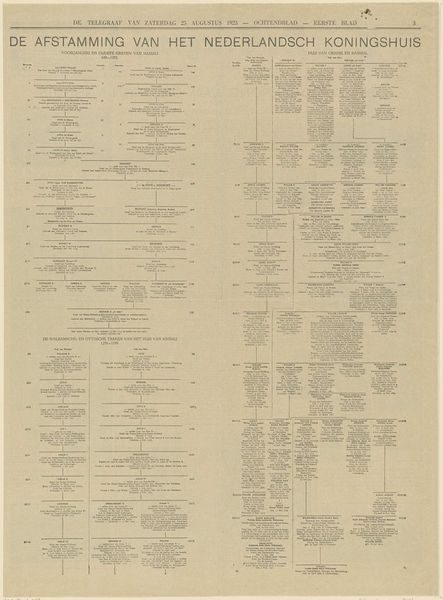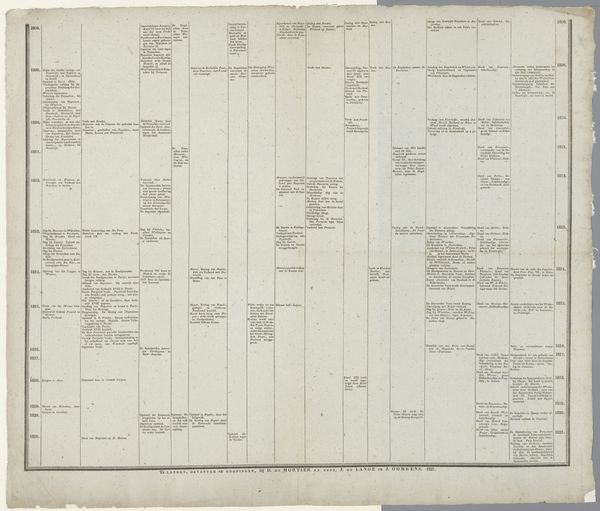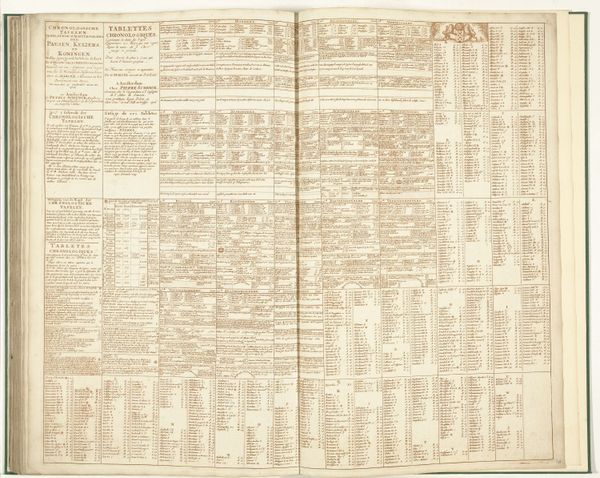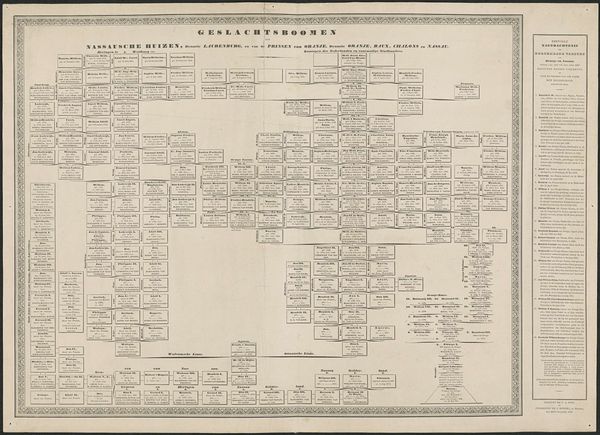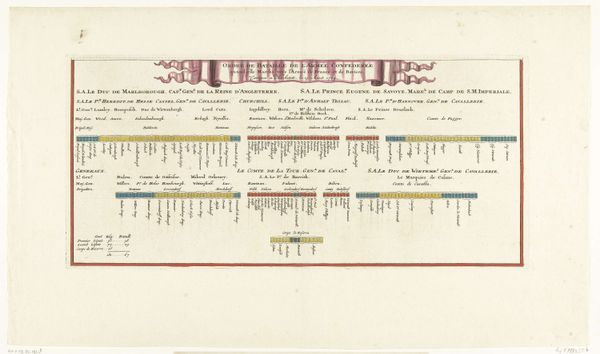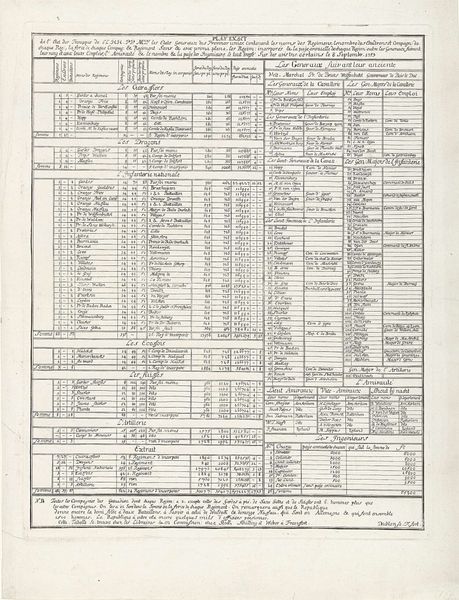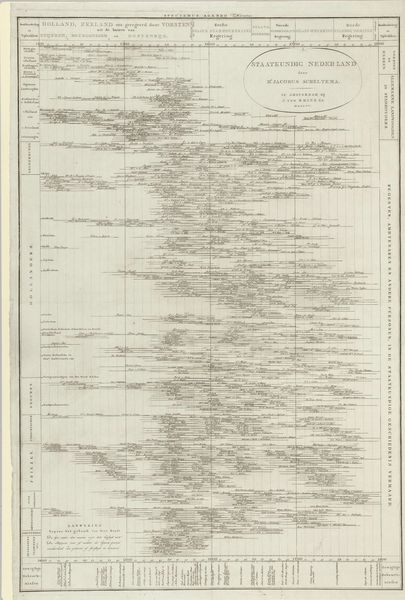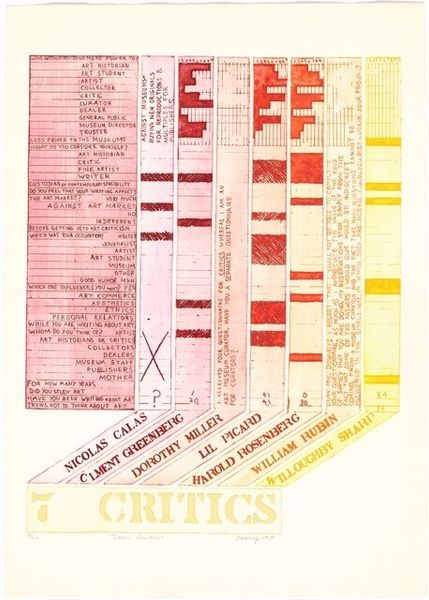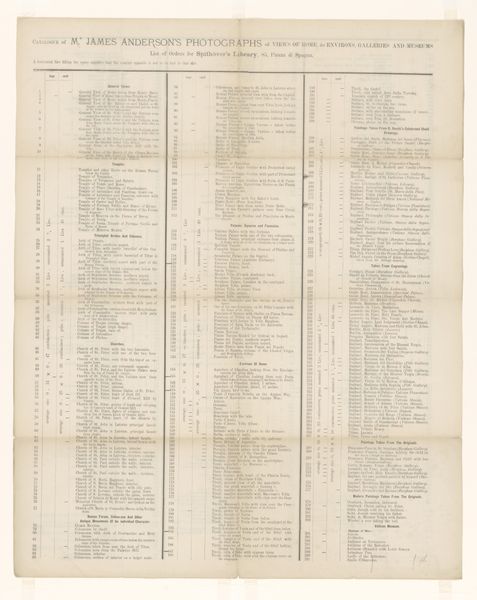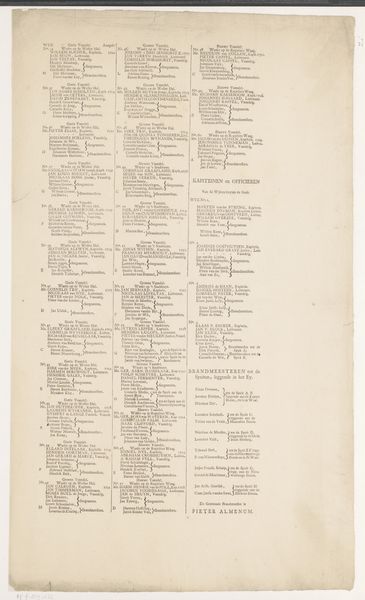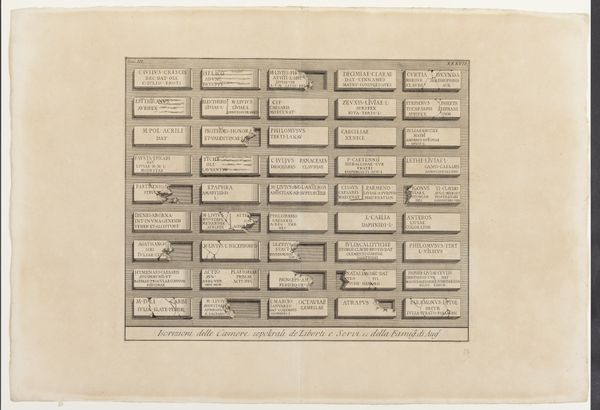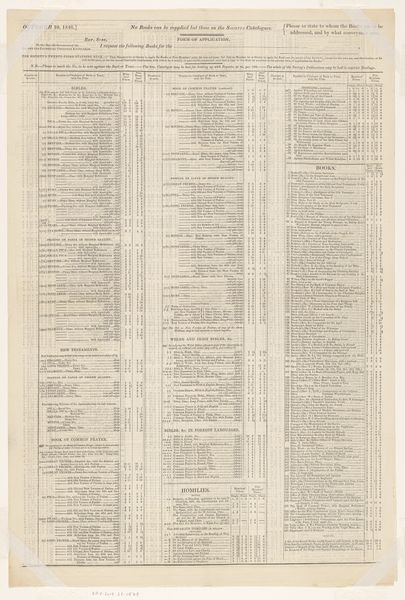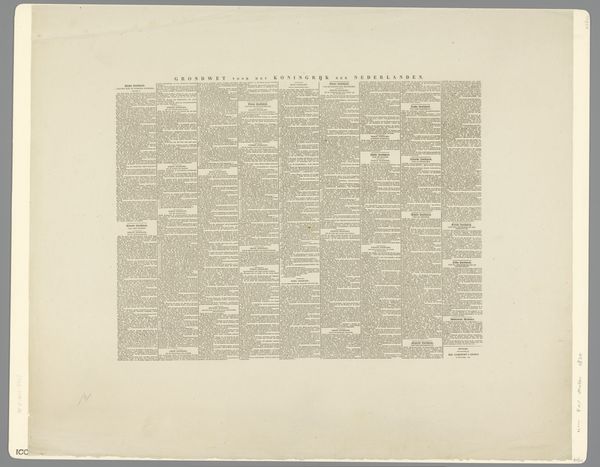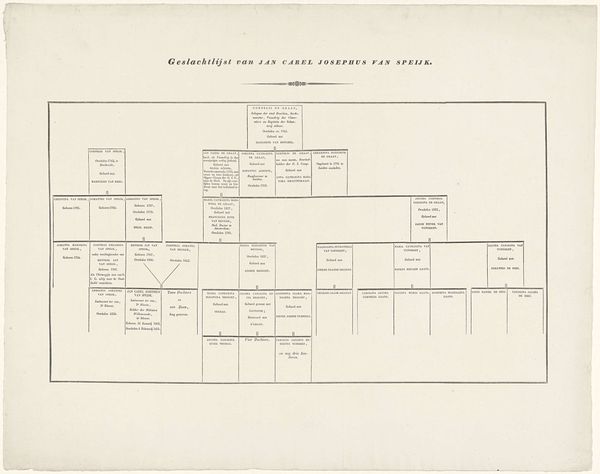
graphic-art, print, paper
#
graphic-art
#
newspaper
#
dutch-golden-age
# print
#
paper
#
geometric
#
history-painting
Dimensions: height 1000 mm, width 680 mm
Copyright: Rijks Museum: Open Domain
Curator: My first impression is just one of overwhelming detail. The density of the information is astonishing, a vast landscape of tiny script stretching in every direction. It almost seems designed to be impenetrable at first glance. Editor: Exactly. We are looking at "Table of Chronological History of Holland," dating from the 1830s. What appears as visual overload is actually a meticulous attempt to organize and present a comprehensive narrative of Dutch history through, well, a timeline formatted as a densely packed chart. Curator: So, the symbolism here lies in the structure itself, correct? It suggests history can be ordered, categorized, understood within clear boundaries, but there is just SO MUCH of it here... It conveys an almost desperate attempt to contain time, or perhaps, all knowledge of time. The rigid divisions remind me of illuminated manuscripts attempting to illustrate biblical timelines and bloodlines in great detail. Editor: I see it as reflecting a 19th-century fascination with scientific categorization, especially in historical narratives. It speaks to a belief that society and historical progress could be understood rationally, displayed for public consumption in easily digestible chunks, though in practice this diagram leans more towards a kind of symbolic overwhelm. But think about where it might be displayed; who might it have been intended for? Schools? Town halls? The goal was democratization through data! Curator: Yes, it presents historical progression in a structured manner, visually associating each ruler and their time with an entire collection of important dates in time. Even today it makes the viewer consider how our histories become organized and recorded, preserved or revised by powerful cultural actors. I feel its geometric shapes carry heavy meanings about a time that no longer exists. Editor: Absolutely. The history we inherit is always structured and organized, just like this print. "Tabel van de Tijdrekenkundige Geschiedenis van Holland" really makes us question how those choices impact our understanding of the past today. Thank you for offering such a stimulating reflection. Curator: My pleasure, thank you.
Comments
No comments
Be the first to comment and join the conversation on the ultimate creative platform.
